QuestionI have a 14 year old black cat who's always been a little skittish and touchy. For the last 18 months or so he's been self mutilating (excessive licking and pulling out his fur.) My vet now has him on cortisone injections when he starts to get agressive in this behaviour which is about every 6 to 8 weeks and it seem to calm him down.I do understand that these injections may cause diabetes, so Naturally I got concerned when this cat started drinking water excessively and urinating excessively. After I questioned the vet he said the cortisone will make the cat react this way. My question is why is this happening after a year and not sooner? I really don't want to subject this cat at 14 years of age to a diabetes test and than have to put him on insulin. I had a 5 year old cat that I gave insulin shots to for a year and he developed a pancreatic tumor and had to be put to sleep. What do you suggest I do in this case? Joan Liva
AnswerHi Joan. Cortisone affects the metabolic system. It increases glucose production and decreases glucose usage. This tends to render regular insulin production insufficient to manage blood sugar levels (blood glucose levels, or BG as you probably know from your experience with diabetes). This is the reason cortisone can cause diabetes, but it can also simply mimick diabetes, without causing the actual disease, which by definition is insufficient production of insulin.
Cortisone also may cause the retention of salt. Both of these may cause excessive thirst and urination, as is seen with true diabetes. However, it does normally take quite some time for these metabolic changes to become significant enough to cause symptoms, so I'm not entirely surprised that the kitty has gone this long without showing symptoms.
Cortisone, as you may know, is likely to cause problems with the inability to heal if used frequently, as well as liver failure, although this is rather rare.
Because of the risk of serious side effects including diabetes, it's very important to regularly check for diabetes when cortisone will be used longterm. Unfortunately, a simple in-office test only checks for BG levels and can be deceiving if the cat is on cortisone.
There's a test called a serum fructosamine test that can tell whether the cat is truly diabetic or if he's hyperglycemic due to some other cause, like corticosteroid usage. It tests for fructosamine, which is a sugar product that is produced when a cat's BG is chronically high. In true diabetes situations, the fructosamine level is much higher than in other cases of hyperglycemia (high BG). This blood test needs to be sent out to a lab, but it is just one test, not a curve that requires an all day stay and a catheter or several needle punctures. I'd say a serum fructosamine test is a good place to start.
Personally, I'd question placing the cat on cortisone at all. Cortisone is used in cases where the skin is irritated due to some autoimmune disease or allergy. However, because you mention your kitty has always been a little touchy, and because of the self-mutilation you describe, I'd be inclined to think this is a behavioral problem and not a physical one. I'm no vet, so I don't want to send you jumping to conclusions. However, I do suggest you ask your vet about this one, or get a second opinion.
Fluoxetine (Prozac) is an excellent drug for treating self-mutilation in cats due to anxiety issues. It has no side effects and is tremendously successful. I've used it in two of my cats and have no qualms about recommending in cases where it's needed. In many cases, the cat can be weaned off the drug after his behavioral is stabilized (usually 4-6 months). Sometimes, the cat may have a relapse and might need to be retreated. Once in a while, a cat will need to be on the drug permanently.
The draw-back with fluoxetine is that it's more expensive than cortisone injections, and it must be given daily. For cats who take pills easily, this is no big deal. For cats who don't take pills easily, fluoxetine can be compounded by most independent pharmacies into what is called a transdermal gel. The medication is ground up and mixed into a cream. A measured amount of the cream is applied to the innter tip of the cat's ear daily. Since a cat's skin is so thin, the medication is absorbed through the skin into the bloodstream. A transdermal gel costs about $1.50 a day in my area, which tends to run more expensive than most areas of the U.S.
There are other anti-anxiety drugs that are successful at treating self-mutilation, including amitriptyline (Elavil), busprione (Buspar), and diazepam (Valium). However, all of these have side effects. Some of them are serious and require blood testing several times a year. I have not used any of these on my cats and cannot recommend them from a personal standpoint, although each of them does have its merit for certain situations. For example, diazepam may be used in cases with hyperactivity. Amytriptyline has analgesic properties and may be used in cases where the cat is in pain.
The risks associated with ANY of these drugs are more unlikely than those associated with chronic cortisone use. I do strongly encourage you to look into using one of these drugs to see if your cat's behavior can be controlled using one of these safer methods.
Good luck, and please keep me posted!

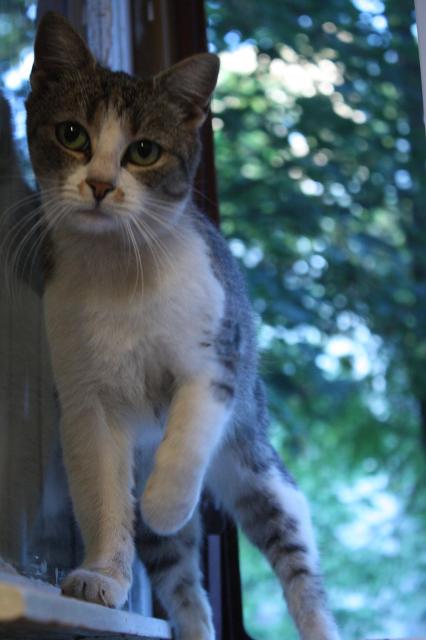 Cat meaowing after spayed
QuestionQUESTION: Hello, I am having a problem with my
Cat meaowing after spayed
QuestionQUESTION: Hello, I am having a problem with my
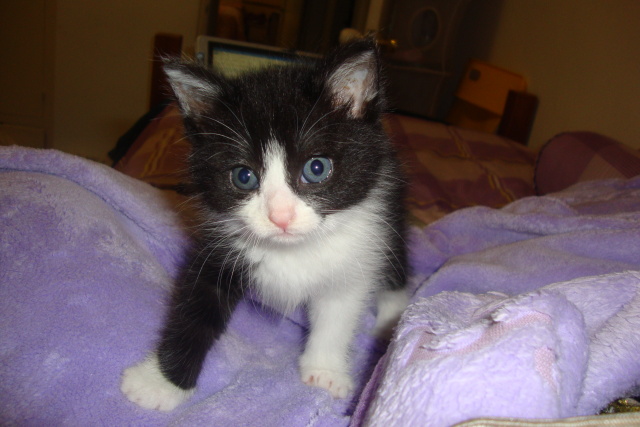 Newborn Kitten feeding ---? 5-6 WEEKS
Question
Venus
Hello expert,
I have a 5-6 week kitten a
Newborn Kitten feeding ---? 5-6 WEEKS
Question
Venus
Hello expert,
I have a 5-6 week kitten a
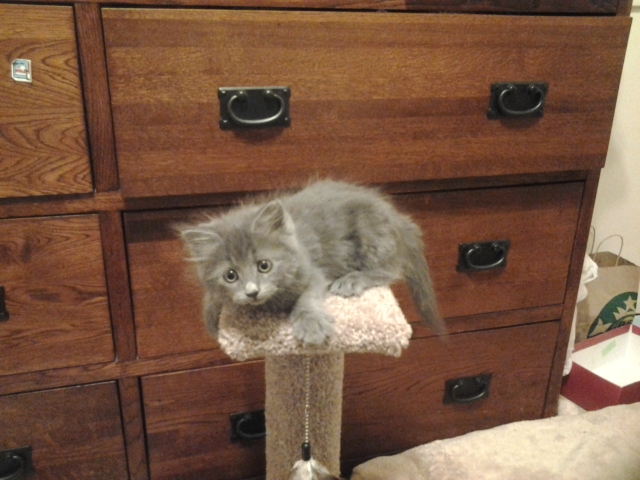 why does my kitten keep peeing on the bed
Question
My kitten
my 7-8 week old kitten has b
why does my kitten keep peeing on the bed
Question
My kitten
my 7-8 week old kitten has b
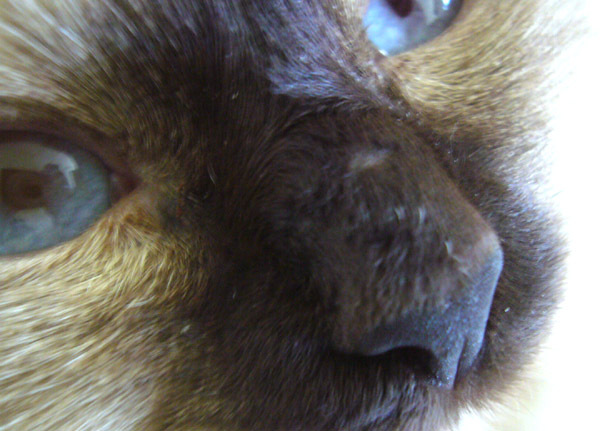 Bald spot on my cats nose
Question
bald spot
Hello Jessica,
Today I notic
Bald spot on my cats nose
Question
bald spot
Hello Jessica,
Today I notic
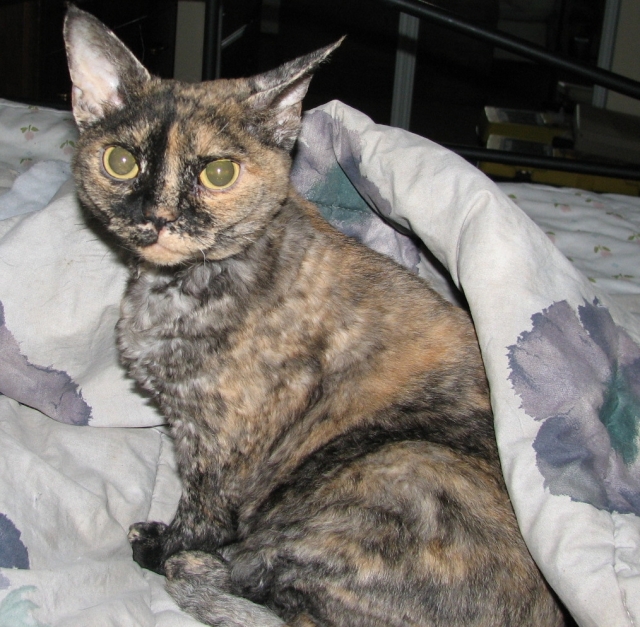 My cat is jealous of my other cat
QuestionQUESTION: Hi Ali. I hope you can provide
My cat is jealous of my other cat
QuestionQUESTION: Hi Ali. I hope you can provide